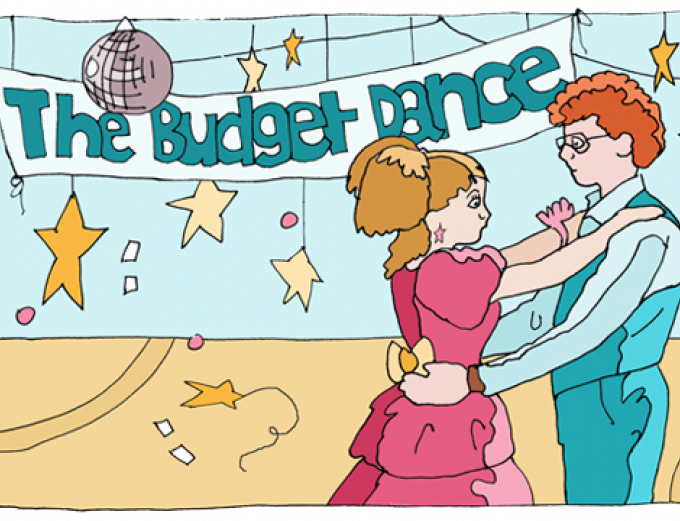Enhance Your Writing with These AP Style Rules
by Julie Fiedler on May 20, 2021
In the days of cave dwelling, Ort and Bog only knew a few spoken words, and turning those words into visual representations was pretty tricky. They could agree on what pictures meant better than they could agree on what a bunch of lines and squiggles meant, so they stuck with pictures and decorated their rocky dwellings with bison and stick figures and it was all fine.
Fast forward a few thousand years and life has become a little more complicated. We’ve hammered out an alphabet we agree on, which is nice. Having consistency in how we express ourselves (such as agreeing on how words should be spelled) goes a long way in establishing order in a chaotic world. And as lame as “order” and “rules” might seem, they actually create a sense of trust between people who are trying to communicate, in whatever form that communication takes.
For instance, let’s say you visit a website and some headlines are capped and some aren’t. You might shrug your shoulders — it’s not a big deal, after all — but chances are it will still feel off. In the recesses of your mind, you might question whether these people know what they’re talking about if they can’t even manage to make their headings consistent. Having some ground rules creates a foundation from which you can do some cool and amazing things with words.
Why We Use AP Style at NBCG
Not everyone realizes there are several “styles” that govern the world of professional writing and editing. They’re all correct, but different styles are used in different fields and they vary on certain points, such as when to use commas, or what should be capitalized. For example, in academic circles, the Modern Language Association's MLA Style Manual and the Chicago Manual of Style are two well-known style guides that authors and editors rely on to keep their writing consistent and polished.
Most journalistic outlets use the Associated Press style, or AP for short. This is what we at New Boston use, too. It’s straightforward, clear and current. Just like fashion, language has trends and AP keeps up, providing a consistent way to reference new topics or adjust to changes. A recent example (perhaps you’ve heard of it) is the coronavirus. Well, coronavirus is actually a “family of viruses, some of which cause disease in people and animals, named for crownlike spikes on their surfaces.” What we’ve been dealing with is coronavirus disease 2019, or COVID-19. Not covid or covid 19 or SARS. COVID-19. Thanks to AP, we have a clear, consistent way of talking about it.
Three Common Business Style Rules
You have to be a word-nerd to embrace a style guide to the degree that we do. (Guilty as charged!) But there are some basic rules every business professional should know. Here are a few to keep in mind:
1. Titles and Capitalization
We all want to feel important. (We all are important, of course.) Titles are one way we can demonstrate our importance to the world. So, we should capitalize our important titles, right? Not so fast.
According to AP, job titles should only be capitalized if they appear before a name. Even some of the most important people in the world fall under this rule: President Joe Biden. Joe Biden is the president.
Exceptions to this rule include acronyms (CEO, CMO, CFO, etc.), degrees (Ph.D., M.D., etc.) and titles in email signatures and business cards (unless you’re emulating e.e. cummings). Some companies capitalize titles after a name. If that’s your internal style, go for it. Just make sure you’re consistent.
2. Years
You wouldn’t think capturing a year would be too difficult, but there’s a mistake many people make when it comes to writing dates — adding an apostrophe. Please, don’t be one of these people. It’s the 1980s, not the 1980’s.
While starting sentences with Arabic numerals (or “numbers” in the common tongue) is generally frowned upon, years are an exception. Twenty people went to the farm. 2020 was not the greatest year.
3. State Names
It’s probably been a while since you sent snail mail, but that whole two-letter abbreviation thing can be really hard to shake. You might find yourself wondering, “Can I just put that abbreviation in my story/article/letter?” AP says “nope!” The only place AP condones state abbreviations is in datelines (location indicators at the beginning of news stories) and even those don’t match the United States Postal Service abbreviations. If it seems confusing, just put abbreviations out of your head entirely and spell the state names out, because that’s the AP way.
If you’re thinking that’s all you need to concern yourself with when it comes to states, there is one more tiny, final, little thing. It’s a comma. Well, two to be exact. That’s right, state names should be offset on both sides by commas. We don’t know why, that’s just the way it is. Manhattan, Kansas, is a happening place. And it deserves its full quota of commas.
Level Up with Three Bonus Word-Nerd Rules
Granted, not everyone puts the kind of thought into words that we do. (If you’re one of those people that avoids words whenever possible, have no fear. That’s why we’re here!) But, if you find style even mildly interesting, here are a few more fun tidbits:
1. Compound Modifiers
When combined (compounded), adjectives and nouns used to describe something else (modifiers) should be hyphenated. The idea here is that the group of words (husband-and-wife team, high-quality product, one-way street) work together as one concept.
Without the hyphenation, our minds might take a few extra milliseconds to link them together properly. Think of a small business owner. If you want to describe a person who owns a small business, add a hyphen: small-business owner. If you’re referring to someone diminutive in stature who owns a mom-and-pop shop, it would be correct (although not recommended) to say a small business-owner. (C’mon. That just sounds insensitive.)
Sometimes, the same words might not be considered a compound modifier if you string them together in a different context. This is especially true of nouns versus verbs. A know-it-all really knows it all!
Fun exceptions to the compound modifier rule: Third grade teacher, chocolate chip cookie.
2. Commas to Offset Names
Let’s face it, we have enough to remember these days. Another beautiful thing about a style guide is that if you forget a rule, you have an easy way to look it up. One that I often revisit is whether or not to use commas to offset a name. Is it “Sherry’s husband Hal” or “Sherry’s husband, Hal”? Trips me up every time. Enter the style guide!
Here, AP tells us that essential clauses — those that must be included for clarity — should not be offset by commas. Presumably, Sherry only has one husband and his name is Hal. Therefore, the name Hal is nonessential information because you could say “Sherry’s husband” and the reader would know you meant Hal. So, “Sherry’s husband, Hal” would be the way to go. But if Sherry is a polygamist and has three husbands, the reader would need to know which husband you were talking about. In this case, “Sherry’s husband Hal won an award.” (Her other husbands are clearly not as noteworthy as Hal.)
3. “More Than” Versus “Over”
In our digital world, characters count. Search engine results and email subject lines have limits on the number of viewable characters, so we marketers often have to squeeze vital information into short snippets to provide a good experience on various digital platforms.
A few years back, guidance from AP was to use “more than” when referring to quantifiable information. For example, more than 80 people attended. Mercifully, AP lightened the rule and said “over” was allowable. As someone who often has 150 characters or less to work with, I am really grateful for the relaxing of this particular rule!
Why bring this up? Is there really a big difference between four and nine characters? When it comes to digital and mobile content, five characters can trigger the dreaded “…” on Google or email. No one likes that.
Bonus Rule!
For a little extra credit, here’s one more. You may not need it now, but you’ll thank us when it’s time to address your holiday cards.
Plural Names
To make a family name plural do not use an apostrophe. REPEAT: DO NOT USE AN APOSTROPHE. Apostrophes signify possession: The McCoy’s … WHAT? Their house? Their car? Their boat? With plural names, add an “s.” Even if the name ends in a “y.” The McCoys (love, the Hatfields). What about names that end in “s,” “z” or “es”? They get a bonus “es.” Keep up with the Joneses.
If this level of detail makes your head spin, you can forget the plural and simply add “Family” to the end for an easy cheat that works with every name: The McCoy Family, The Hatfield Family, The Jones Family.
These rules are just the tip of the iceberg, but we hope they come in handy. To improve your communications, we highly recommend following a style guide. (You could even consider joining the AP Family!) If your company has specific language, naming or acronyms, create your own style guide to address details unique to your business. This will give your employees a common reference and ensure your brand messaging is consistent.
And if you’re ready to do some cool and amazing things with words, but aren’t sure how, please reach out. That’s kind of our thing.





